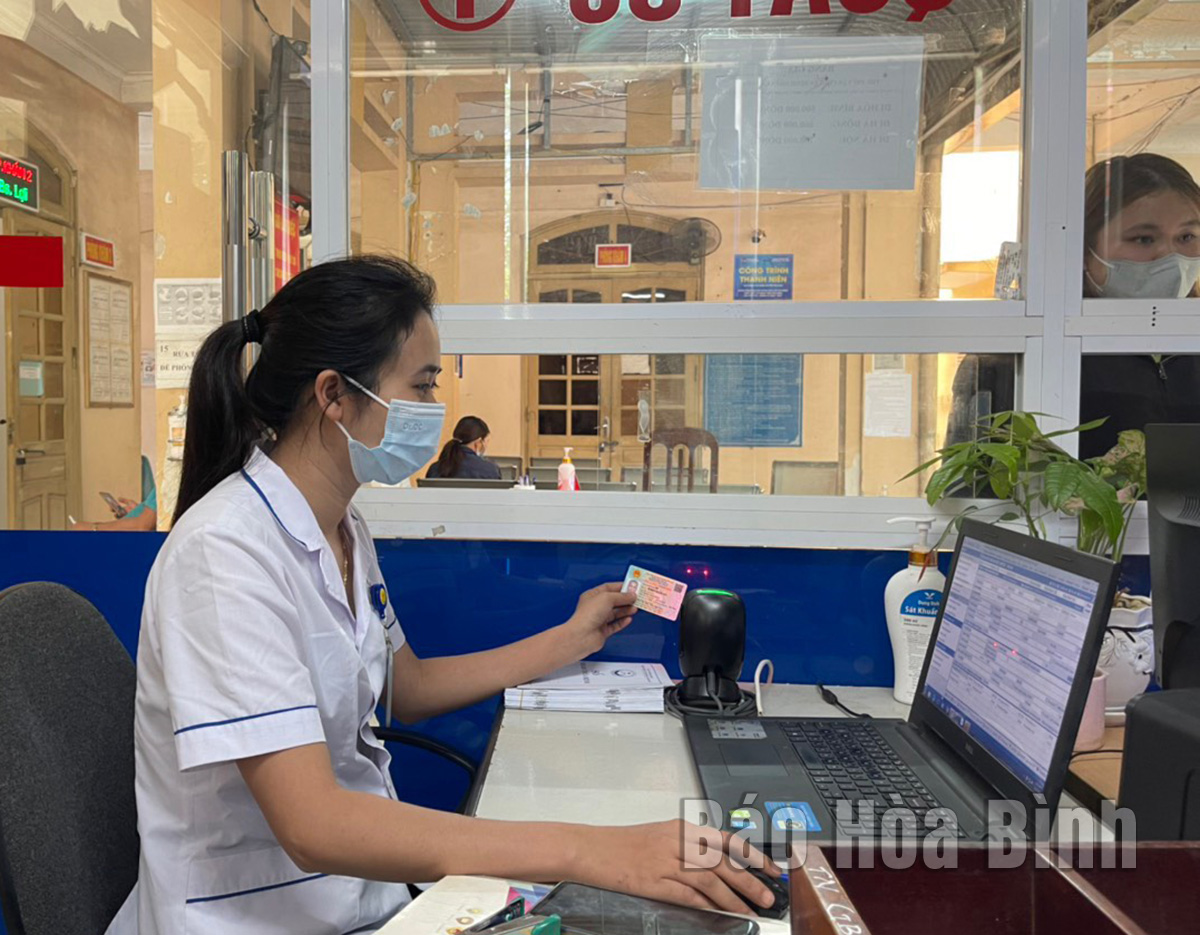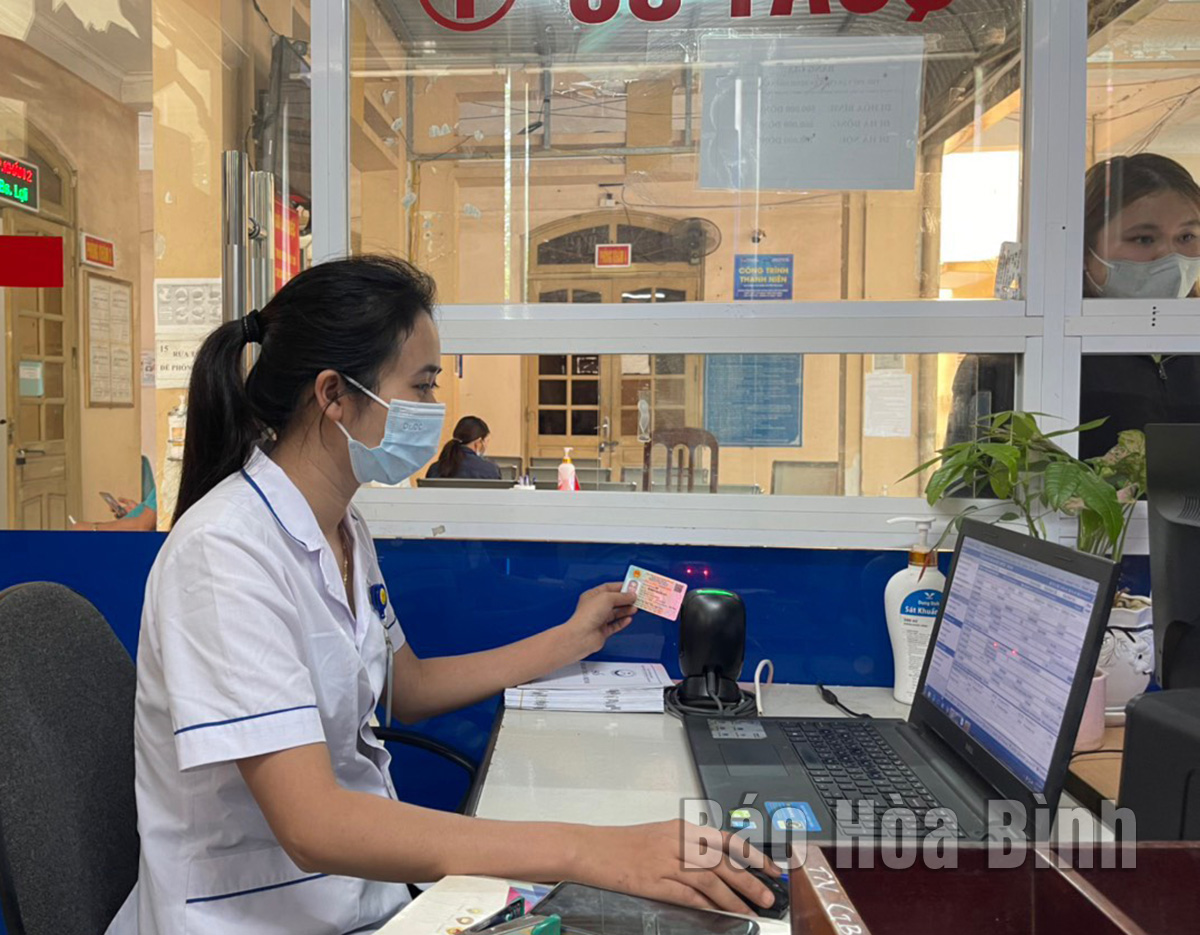
(HBO) - The use of chip-based citizen ID cards to replace paper health insurance cards in medical facilities in Hoa Binh is expected to be the start of a roadmap for the gradual replacement of paperwork in health care procedures, thus reducing the waste of time and money of local residents.
Under the Government's Project No. 06, the
province’s health sector set a target of having 100% of medical establishments
accept the use of chip-based citizenID cards in examination and treatment
services instead of paper health insurance card.
Photo: Local people register for medical
examination and treatment with health insurance by chip-based citizenID
cards at Luong Son district’s health centre.
As many as 232 medical stations in Hoa Binh have
accepted the use of chip-based citizenID cards in place of traditional
health insurance cards, bringing convenience for local residents and ending the
situation that patients use other people's health insurance cards to get
insurance-covered medical treatment or cheat to take advantage of health
insurance funds.
The provincial General Hospital has been
equipped with more than 10 chip-based citizenID card readers.
Recently, the ratio of patients
usingchip-based citizenID cards to access medical treatment covered
by health insurance has increased.
Luong Son district’s health centre leads medical
establishments in Hoa Binh in applying chip-based citizenID cards for
registering medical examination and treatment services, with 8,202 successful
transactions out of 11,268 attempts. The unsuccessful transactions were due to
insufficient data in the database.
The centre has been equipped with five ID card
readers, reducing waiting time for patients.
According to statistics of the Vietnam Social
Security’s chapter in Hoa Binh, so far, there have been nearly 562,000
chip-based citizen ID cards synchronized with insurance data. All public
healthcare facilities at district level and above have implemented lookups of
health insurance information via chip-based citizen ID cards with a success
rate of 61.5%./.
The emulation movement "Hoa Binh joining hands to build new-style rural areas” has been widely spreading, becoming a driving force that motivates the localities to renew rural landscapes and improve the material and spiritual lives of the residents. In this movement, the people play a central role-both as the main implementers and direct beneficiaries of its outcomes.
In response to the global digital revolution, Hoa Binh Newspaper is transforming itself into a modern and multi-platform media hub, blending cutting-edge technology with a restructured newsroom and a new generation of tech-savvy journalists.
Hoa Binh province’s Association of the Elderly recently held a conference to review the project on expanding the inter-generation self-help club model until 2025.
In a move to implement Resolution No. 57-NQ/TW, issued on December 22, 2024 by the Politburo, which targets breakthroughs in science-technology development, innovation, and digital transformation, the Hoa Binh provincial Department of Health has issued a plan to roll out the "Digital Literacy for All” campaign within the local health sector.
An Nghia Commune (Lạc Sơn District) is one of the communes that achieved the tha standard of the national new rural area in 2018. Entering a new development phase, the commune is now trying to meet the criteria for the advanced new rural development. With the strong political will and the public consensus, the commune is gradually overcoming the challenges to reach this goal, aiming for the sustainable development.



